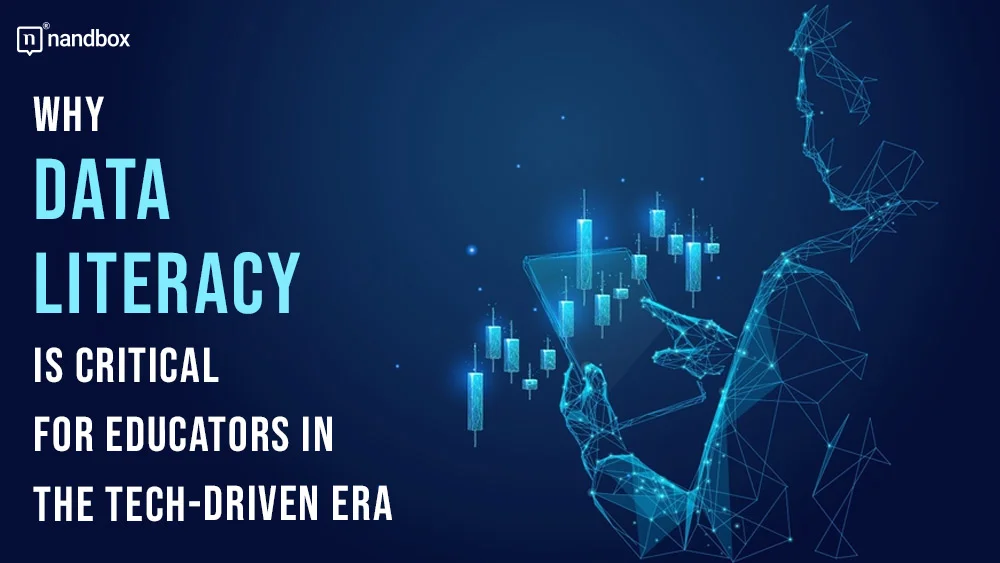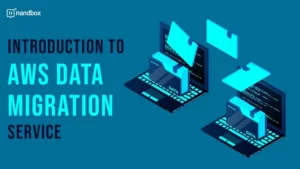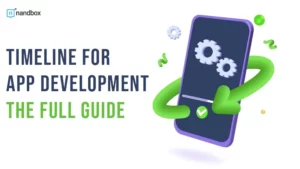We live in a world where technology seeps into every nook and cranny of our lives (personal and professional). As such, it’s no surprise that traditional teaching methods are giving way to innovative approaches that leverage technology and data analytics.
This shift transforms how educators teach and how students learn, creating a more dynamic and personalized learning environment. But it also means teachers and educators everywhere must work on their tech skills.
Since Big Data plays a pivotal role in education technology, data literacy is a skill that educators shouldn’t ignore. Understanding and interpreting data helps teachers make informed decisions about curriculum design, instructional strategies, and student support mechanisms.
The Rise of Big Data in Education
Big Data tech tools are capable of analyzing vast amounts of student data and suggesting ways to improve teaching methods, tailor educational content, and enhance student performance. Institutions use them to identify trends, predict outcomes, and optimize resources.
This approach helps educators make informed decisions and provides insights into individual learning patterns. For instance, learning analytics, the tech involved in collecting, analyzing, and reporting data about learners, helps improve educational experiences. On the other hand, adaptive learning systems use this data to personalize instruction based on individual student needs.
By now, around 60% of higher education institutions have already implemented some form of learning analytics. These systems have transformed the way we see and implement education by helping identify at-risk students early on, allowing educators to intervene proactively.
Additionally, students and teachers have access to adaptive learning platforms that continuously adjust the difficulty level and content based on real-time performance metrics. This personalization can significantly boost student engagement and retention rates.
What is Data Literacy and How to Achieve It?
In today’s educational landscape, teachers encounter a plethora of student performance metrics, behavioral statistics, and engagement indicators. By learning how to collect accurate information from these sources, they can customize lesson plans to meet diverse student needs.
Data literacy is just that – the ability to understand, interpret, and use data effectively in one’s professional field. It encompasses several key components: identifying relevant data sources, analyzing and interpreting data accurately, making data-driven decisions, and communicating findings clearly.
Let’s take standardized test scores or attendance records as an example. Teachers who learn to understand these figures can identify at-risk students early on. Then, it’s only a matter of adapting their teaching strategies to make sure all students feel included.
Teachers can also use data collected during class to determine whether they need to tweak lesson pacing or modify homework assignments so that everyone gets the full benefit of education and training.
How to Build Your Data Literacy as a Teacher
The good news is that teachers and educators everywhere have access to a wide range of resources, online and offline, for building up their data literacy.
Online Resources
For starters, leading universities offer a wide selection of online courses that offer foundational knowledge in data analytics. As you probably know by now, these platforms feature flexible schedules, so you can learn at your own pace.
If you’re looking for a program that will also help you advance your career, you should consider an online Data Scientist Certification. These programs delve deeper into complex data manipulation and interpretation techniques that directly impact educational outcomes.
Additionally, platforms like Google Classroom can help you manage assignments and analyze student performance data efficiently. Tools like Tableau offer advanced visualization options to turn complex datasets into understandable charts and graphs, making it easier to draw actionable insights.
Offline Resources
Workshops are also an option for hands-on experience, covering topics from basic to advanced analytics. They often include real-world case studies relevant to education, allowing students to apply learned concepts immediately in the classroom.
Creating lesson plans that use real-world data can help you incorporate hands-on projects into your daily teaching duties. Design activities where students gather and analyze data from experiments or surveys and visualize the results. This approach lets you practice data skills while enhancing student engagement.
You can also create discussion groups or study circles with other teachers and educators interested in upping their data literacy skills. You can establish a meeting schedule to explore data concepts, analyze case studies, and discuss real-world applications in the classroom.
By engaging in focused discussions and exchanging ideas, you’ll gain new perspectives and deepen your understanding of data.
Benefits for Educators Who Master Data Literacy
Data literacy empowers educators to optimize teaching strategies, provide individualized support, and refine curricula based on solid evidence, all of which contribute to enhanced educational outcomes.
Improved Learning Experience
As a teacher who understands data, it will be easier to identify which methods work best by analyzing student performance metrics. This means you can fine-tune your teaching approaches to maximize effectiveness and engagement.
Data also helps track students’ progress, pinpoint areas where they struggle, and tailor interventions accordingly. This targeted approach fosters a more supportive learning environment and helps every student reach their full potential.
Technology and the use of Big Data can also help decision-makers improve the curriculum design and make sure the educational content meets students’ needs.
By leveraging data on what works and what doesn’t, teachers can make informed decisions about curriculum adjustments or overhauls.
Career Benefits
Data literacy mastery also offers substantial career benefits for educators. Proficiency in data analysis sets you apart, demonstrating a commitment to evidence-based practices. Schools increasingly value data-driven decision-making, making these skills highly sought after.
Moreover, enhanced data literacy can lead to leadership opportunities. Administrators need staff who can interpret and present data effectively, influencing policy and instructional strategies at a higher level.
Finally, being proficient in data analytics tools such as Excel or Tableau broadens your professional skill set, making you versatile and adaptable in various educational settings. These competencies also open doors for roles beyond the classroom – such as curriculum development specialists or educational consultants, where deep analytical insight is crucial.
Overcoming Challenges
It is clear by now that technology has a beneficial impact on education. Schools using adaptive tools have seen up to a 30% increase in course completion rates. Teachers save time with automated grading and targeted lesson plans, and administrators can use insights for resource allocation and policy-making.
However, this doesn’t mean the change is easy or that there are no challenges to overcome. For instance, teachers are notoriously overworked, juggling numerous responsibilities, which makes it difficult for them to find time for their professional development.
Another obstacle is a lack of access to proper resources. Limited access to appropriate tools and resources also poses a problem. While some schools provide software like Excel or Google Sheets, others may lack the necessary infrastructure or budget for advanced tools such as Tableau or specialized educational analytics platforms.
Additionally, there can be cultural resistance within schools where data-driven approaches are not yet fully embraced by all staff members. This reluctance can stem from fear of accountability or skepticism about the effectiveness of using data in teaching practices.
Finally, varying levels of baseline technological proficiency among teachers can slow progress in developing data literacy skills across an institution. Ensuring everyone starts from an even playing field requires tailored support and incremental learning opportunities.
To address these challenges, schools can implement several solutions, such as:
- Integrate data literacy training into professional development schedules and allocate specific time during in-service days for workshops or online courses that focus on data analysis tools and techniques.
- Provide access to comprehensive resources and software. To this end, it helps to partner with tech companies to obtain educational discounts or grants to offset costs.
- Create a supportive community within the school to facilitate peer learning opportunities. Encourage teachers who are proficient in data skills to mentor others through study groups or informal coaching sessions.
- Offer differentiated training customized to various proficiency levels among staff members. Provide introductory courses for beginners while offering advanced sessions for those looking to deepen their expertise further.
Wrap Up
Overall, technology and Big Data have a big role to play in the development of future education. For now, their main role is to change the classroom and empower educators with actionable intelligence, leading to more effective teaching methods tailored to each student’s unique needs.







